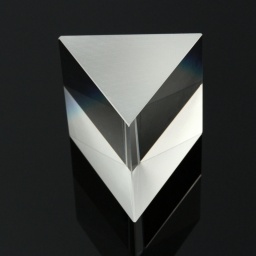Triangular prism
The curved part of the rotating cylinder is four times larger than the area of its base. Determine the volume of the regular triangular prism inscribed in the cylinder. The radius of the bottom of the cylinder is 10 cm.
Final Answer:

Tips for related online calculators
See also our right triangle calculator.
Tip: Our volume units converter will help you convert volume units.
See also our trigonometric triangle calculator.
Tip: Our volume units converter will help you convert volume units.
See also our trigonometric triangle calculator.
You need to know the following knowledge to solve this word math problem:
algebraarithmeticsolid geometryplanimetricsUnits of physical quantitiesGrade of the word problem
Related math problems and questions:
- Cylinder - curved area
 The curved area of the rotary cylinder is three times greater than the area of one base of this cylinder. The radius of the base of the cylinder is 10 cm. What is the surface area of the cylinder?
The curved area of the rotary cylinder is three times greater than the area of one base of this cylinder. The radius of the base of the cylinder is 10 cm. What is the surface area of the cylinder? - Wooden prism
 Find the weight of a regular wooden triangular prism with a height equal to the base's perimeter and a figure inscribed in a circle with a radius of 6.M cm, where M is the month of your birth. The density of oak is 680 kg/m³.
Find the weight of a regular wooden triangular prism with a height equal to the base's perimeter and a figure inscribed in a circle with a radius of 6.M cm, where M is the month of your birth. The density of oak is 680 kg/m³. - A prism
 A prism with an altitude of 15 cm has a base in the form of a regular octagon inscribed in a square of 10cm x 10cm. Find the volume of the prism.
A prism with an altitude of 15 cm has a base in the form of a regular octagon inscribed in a square of 10cm x 10cm. Find the volume of the prism. - The regular
 The regular triangular prism has a base in the shape of an isosceles triangle with a base of 86 mm and 6.4 cm arms; the height of the prism is 24 cm. Calculate its volume.
The regular triangular prism has a base in the shape of an isosceles triangle with a base of 86 mm and 6.4 cm arms; the height of the prism is 24 cm. Calculate its volume. - Circumscribed hexa prism
 The regular hexagonal prism is 2 cm high. The radius of the circle circumscribed by the base is 8 cm. Determine its volume and surface.
The regular hexagonal prism is 2 cm high. The radius of the circle circumscribed by the base is 8 cm. Determine its volume and surface. - Equilateral cylinder
 A sphere is inserted into the rotating equilateral cylinder (touching the bases and the shell). Prove that the cylinder has both a volume and a surface half larger than an inscribed sphere.
A sphere is inserted into the rotating equilateral cylinder (touching the bases and the shell). Prove that the cylinder has both a volume and a surface half larger than an inscribed sphere. - Triangular prism - regular
 The regular triangular prism is 7 cm high. Its base is an equilateral triangle whose height is 3 cm. Calculate the surface and volume of this prism.
The regular triangular prism is 7 cm high. Its base is an equilateral triangle whose height is 3 cm. Calculate the surface and volume of this prism.
